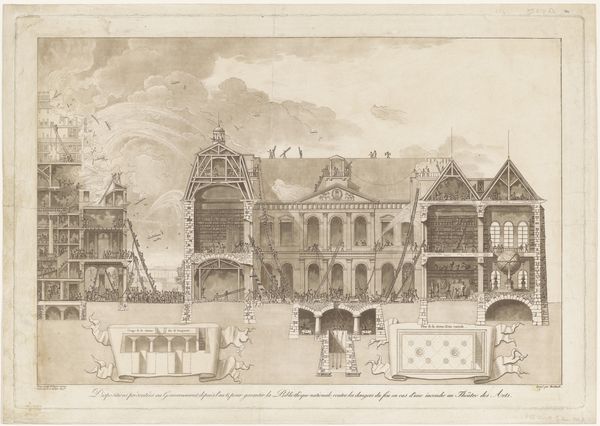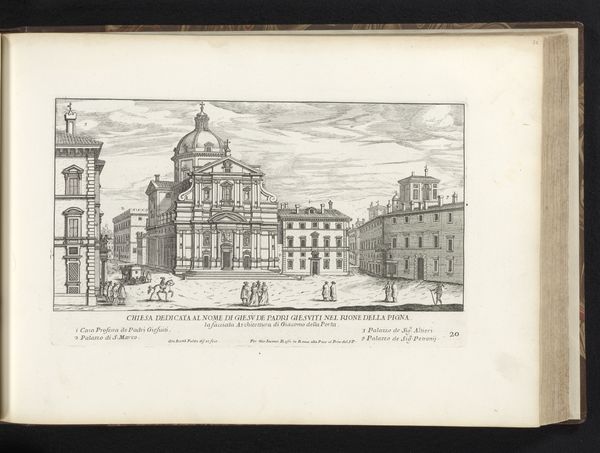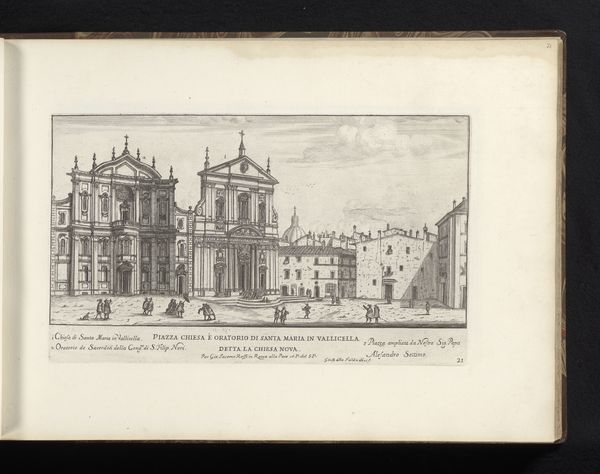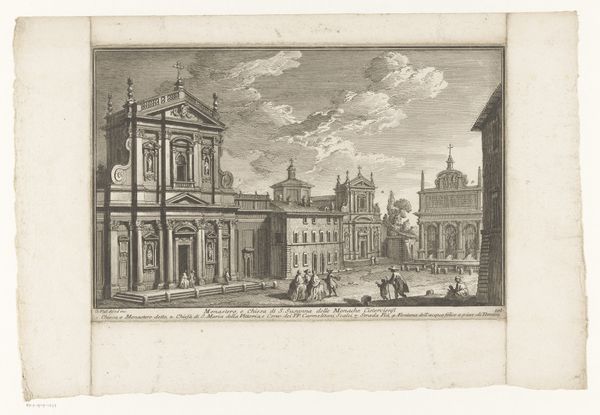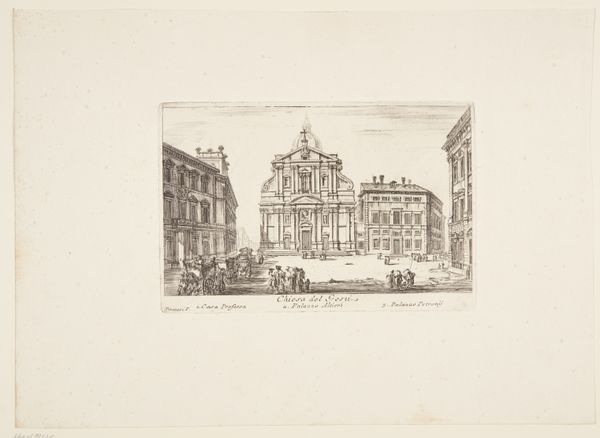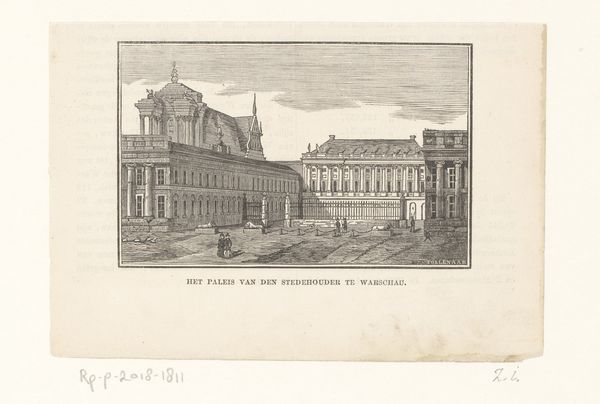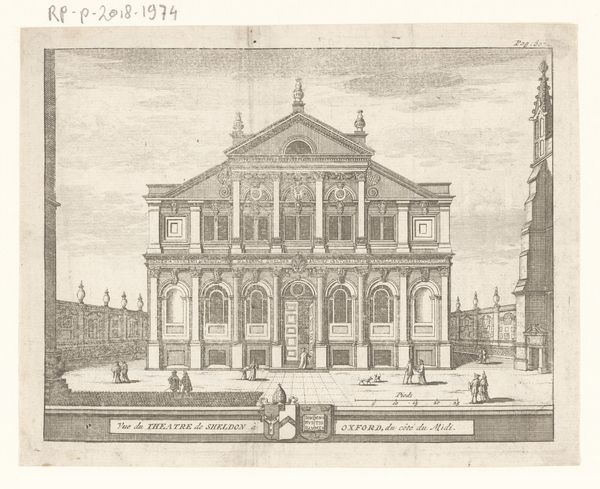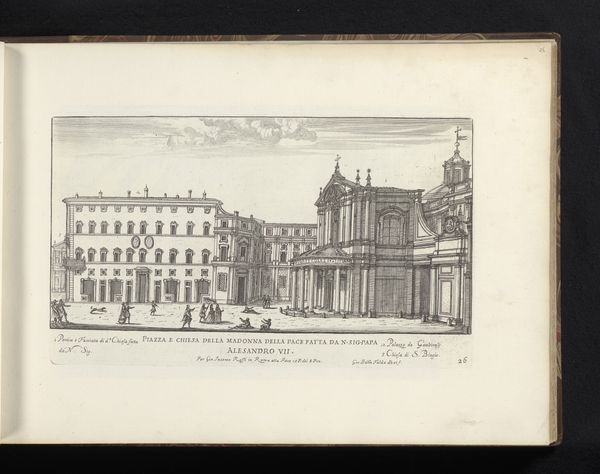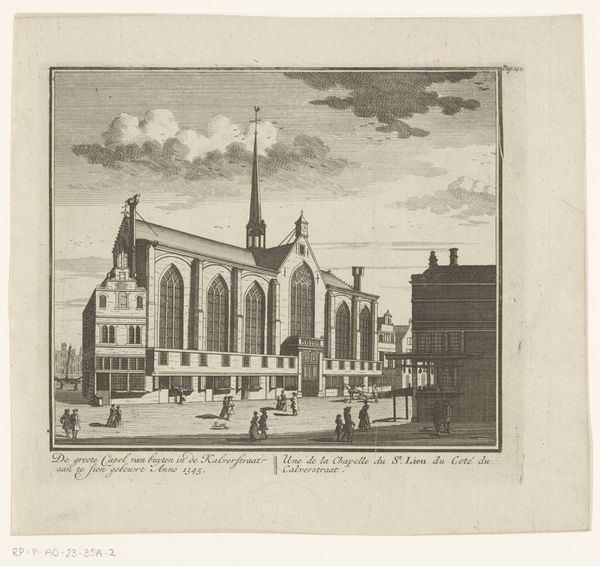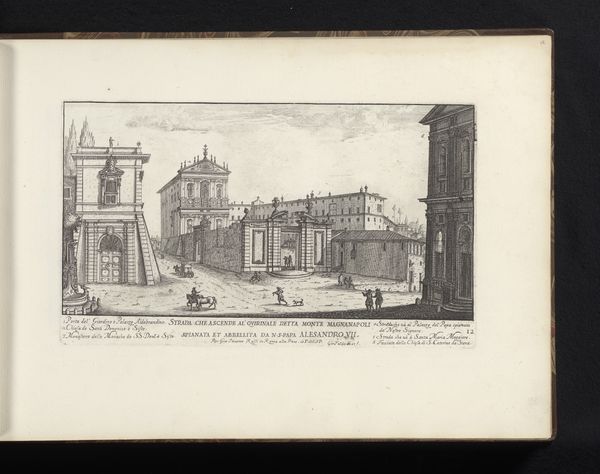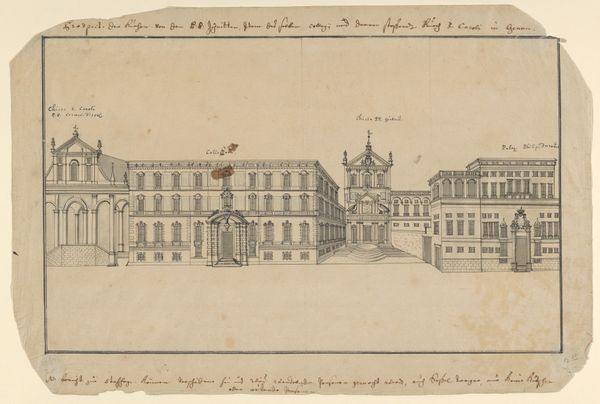
#
aged paper
#
toned paper
#
light pencil work
#
ink paper printed
#
parchment
#
old engraving style
#
personal sketchbook
#
sketchbook drawing
#
watercolour illustration
#
sketchbook art
Dimensions: height 138 mm, width 248 mm
Copyright: Rijks Museum: Open Domain
Curator: This cityscape, simply titled "Stadsgezicht," comes to us from the workshop of Jean Marot, dating roughly between 1651 and 1661. It's an ink print on paper. Editor: It’s remarkably light. The etching lines are so fine, creating this sense of openness and air. There’s almost a delicacy that belies the subject matter of such solid architecture. Curator: Indeed, the etching captures more than just stone and mortar. Note how the structures, though formidable, are placed symmetrically around a central, almost ecclesiastical building. It gives a sense of balance, and perhaps suggests a spiritual or ordered society. Editor: I’m intrigued by the medium itself. Think about the labor invested in creating the copper plate, the skilled hands meticulously incising the lines that define the image. And then the repeated process of printing—a fascinating act of reproduction in itself. It’s amazing to think about the skilled craftsmanship needed to achieve this level of detail consistently. The architecture in this “Stadsgezicht,” and indeed the whole city shown within this image, emerges not only from stone, but from many artisans involved in a reproducible image industry. Curator: Absolutely. The lines carry symbolic weight beyond mere depiction, invoking cultural memory, not just of Paris but the entire culture that was then evolving. Notice also the arrangement of the figures. What narratives are at play in each vignette of public activity and architectural power? The figures appear so tiny! How does this choice emphasize human actions relative to divine structures and religious authorities? Editor: The print certainly creates a sense of order, yet one achieved through laborious, repeated action – an artistic assembly line if you will. And, as a printed artifact, one easily circulated and consumed... Curator: Ultimately, a testament to a particular era and place. Editor: A convergence of technique and time...quite something to ponder.
Comments
No comments
Be the first to comment and join the conversation on the ultimate creative platform.
